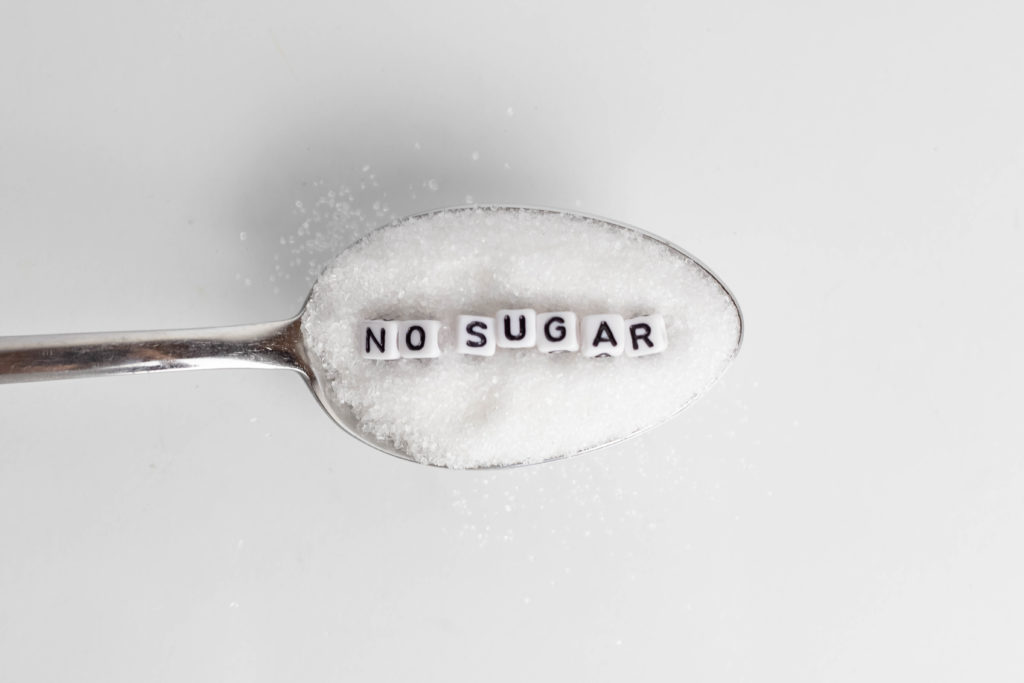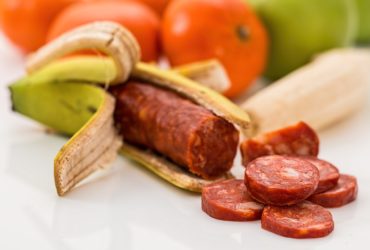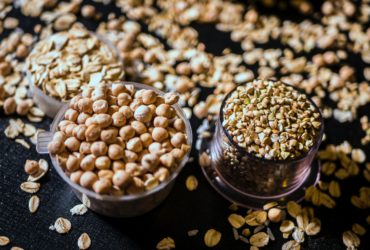By Hafida Mazoud
When I offered my friend a hot drink, I inquired whether they preferred it with or without sugar. The response was, “I eliminated added sugars from my diet because it is unnecessary and consuming less of it can lead to a healthier and longer life.” This response is correct to a certain extent, like any other food, sugar can cause health problems if consumed in excess. People can become addicted to it and use it to satisfy their cravings rather than their nutritional needs. Sugar can be naturally occurring in a product or added as an ingredient, according to the public’s understanding but has this always been the case throughout history?
Before highlighting the milestones in the journey of sugar and sweetness and our innate craving for it, some definitions must first be established. Carbohydrates, which can be complex or simple, are one of the macronutrients we need and our bodies’ primary source of energy. Simple carbohydrates or single sugars such as glucose, galactose, and fructose serve as the foundation for double sugars like sucrose (table sugar) and more complex sugars like starch. Whatever type of digestible carbohydrates we eat, they all break down eventually to one of these three molecules since they’re the smallest sugar units that our intestines can absorb.
Sweet foods such as honey, dates, and wild fruits were consumed by our ancestors to obtain sweetness. Honey was the first sweetening agent discovered by humans, with traces of it discovered in ancient Egyptian tombs. It is thought that we discovered wild honey and decided to collect; finding that it provided us with both energy and pleasure, we learned how to keep bees for honey production. The second source of this condiment was sugarcane, which originated in Asia and was used for millennia in prehistory. The canes were brought to the Mediterranean by Indian and Persian merchants, where it was cultivated around the Nile and Jordan rivers. Arabs extracted and refined table sugar on a larger scale and popularised it through trade.

Photo of Sugarcane Crop from Maxpixel
The story of sugar took a dark turn when Europeans established massive sugarcane plantations in their Pacific and Caribbean colonies, which was a major cause of transatlantic slavery. Following European conflicts, the French began extracting sucrose from sugar beets and widely cultivating it as a substitute for sugarcane in the 19th century, which contributed to increased sugar production, as did the later development of sweeteners, particularly corn-based sweeteners. Human physiology has been based on a natural sugar diet, and it is suggested that sucrose probably got into our diets by accident as sugarcane was originally intended to fatten pigs. Furthermore, the history of sucrose is intertwined with the destruction of ecosystems as a result of deforesting in order to develop sugar plantations, as well as its negative consequences in terms of public health.
After glancing at sugar history, sugar craving was what drove its consumption and production, which resulted in not only health issues but also social and environmental ones. Plants and fruit were the primary natural sources of sugar, and our ancestors evolved to crave them, urging them to wander around for fruit to consume for energy. Those who survived were able to pass on their genes, including the sweet-tooth gene variation, to their offspring. The issue is that we do not require the same number of calories as our hunter-gatherer ancestors, but we consume the same or more calories, especially with the incorporation of added and processed sugars into our diet.
![]()
Photo by William MacKenzie on Rawpixel
Sugary products can provide the same level of satisfaction as drugs, so people develop an emotional or psychological dependence on sugar and become addicted to it. This substance is difficult to avoid because it is ubiquitous in so many products, including sodas, snack bars, and even savoury preparations such as canned food, sauces or ready meals. Hidden sugars are now contained in industrial products as additives and serve a variety of technological functions in foods, and their presence in savoury products may be used as a preservative or thickening agent rather than a flavouring agent.
Public policies are attempting to reduce sugar consumption by levying taxes on products containing added sugar and raising awareness about its dangers. Sweeteners such as the non-caloric natural sweetener Steviol and the artificial non-caloric Aspartame were introduced as alternatives. However, some companies Healthwash their products and include misleading information on their labels, making it impossible for consumers to make an informed purchasing decision. For example, sugar alcohols (mannitol, sorbitol, etc.) are considered a caloric artificial sweetener from which the body produces energy, so even if a product says it contains only sweeteners, it does not necessarily mean it is calorie-free.
To reiterate, incorporating slow sugars into your diet will gradually provide you with consistent energy for several hours after consumption. Fibres can also help fast sugars like fructose be assimilated less quickly by the body, resulting in maintaining normal blood sugar levels. Other plant-derived sweeteners with a lower glycaemic index like as Stevia, Carob Syrup, or Agave Syrup, can be used to sweeten your desserts or morning coffee.

Photo by Marco Verch on Flickr
Sweeteners do not all work the same, some can replace sugar when it comes to the sweetness but lack the same physicochemical properties. As a result, food technologists are sometimes faced with the dilemma of finding a substitute that may achieve a good organoleptic quality without compromising the nutritional quality of the product. Sometimes whenever we solve one problem, we inadvertently create another. The tale of sugar discovery and consumption may lend credence to the idea that sugar is the wrongdoer in the current obesity epidemic, however, we are telling the story, and we may be blaming sugar rather than accepting responsibility for our actions. Be critical of what you read, science is an ever-evolving process of discovering new knowledge and sometimes updating the old one. Looking back to sugar’s history, be mindful of what you eat and where it comes from and don’t blindly accept someone else’s interpretation.
Sweeteners were previously published on our blog, read about A Brief History on Alternative Sweeteners, Natural Sweetener and In Defense of Refined Sugar.
References
Bentley, A., Horton, M. and Langton, P. (2015) A history of sugar – the food nobody needs, but everyone craves. [Online] [Accessed on 10 August] https://theconversation.com/a-history-of-sugar-the-food-nobody-needs-but-everyone-craves-49823
Eggleston, G. (2019) ‘History of Sugar and Sweeteners.’ In Chemistry’s Role in Food Production and Sustainability: Past and Present. Vol. 1314. American Chemical Society, pp. 63-74.
Kritsky, G. (2017) ‘Beekeeping from antiquity through the middle ages.’ Annual Review of Entomology, 62 pp. 249-264.
Lieberman, D. E. (2012) Evolution’s Sweet Tooth. The New York Times. [Online] [Accessed on 10 August] https://www.nytimes.com/2012/06/06/opinion/evolutions-sweet-tooth.html
Mucci, K. (2017) The Illustrated History of How Sugar Conquered the World. From rarefied medicine to colonial invader to public health menace, the story of the world’s most influential flavor. [Online] [Accessed on 10 August] https://www.saveur.com/sugar-history-of-the-world/
Piekara, A., Krzywonos, M. and Szymańska, A. (2020) ‘Sweetening Agents and Sweeteners in Dietary Supplements for Children-Analysis of the Polish Market.’ Nutrients, 12, 08/09, p. 2387.
Ruxton, C. H. S., Gardner, E. J. and McNulty, H. M. (2009) ‘Is Sugar Consumption Detrimental to Health? A Review of the Evidence 1995—2006.’ Critical Reviews in Food Science and Nutrition, 50(1), 2009/12/31, pp. 1-19.
Wiss, D. A., Avena, N. and Rada, P. (2018) ‘Sugar Addiction: From Evolution to Revolution.’ Frontiers in psychiatry, 9 pp. 545-545.
Zaitoun, M., Ghanem, M. and Harphoush, S. (2018) ‘Sugars: types and their functional properties in food and human health.’ International Journal of Public Health Research, 6(4) p. 93.
Featured Image by Formulate Health at formulatehealth.com

Hafida Mazoud| Linkedin
SMF Blog Writer
Hafida became interested in food safety and majored in Food Science after experiencing life-threatening food poisoning. She has a Master’s degree in Food Safety and Quality Management as well as a Bachelor’s degree in Food Technologies from the Faculty of Science and Technology in Morocco. She later moved to the United Kingdom, where she pursued a second Master’s degree in Food Science and Innovation from Manchester Metropolitan University.
Hafida’s research focuses on evaluating the influence of sensory attributes such as colour on consumers acceptance of various food products like herbal tea. Hafida is a native Tamazight speaker (North African indigenous language) who also speaks Arabic, English and French. She is eager to write about topics involving food innovation, security and sovereignty.
She is currently a food consultant at the Global Diversity Foundation, where she works with rural food entrepreneurs in the High Atlas region. She is co-founder of Triple E: Educate, Empower, Exchange, an initiative that promotes the right to access information by teaching young Moroccan students how to find and apply for scholarships.
In her spare time, she enjoys spending time with her nephews and niece, going on long walks, playing video games, and cooking while listening to music.






Nice article. The sad part is even in the west, people food shop as if they are in a nutritional desert. The addictive qualities of sugar have been so deeply embedded in peoples brain pathways that people won’t stop until they progress to being diabetic or obese, and even then they want meds to keep eating sugar.